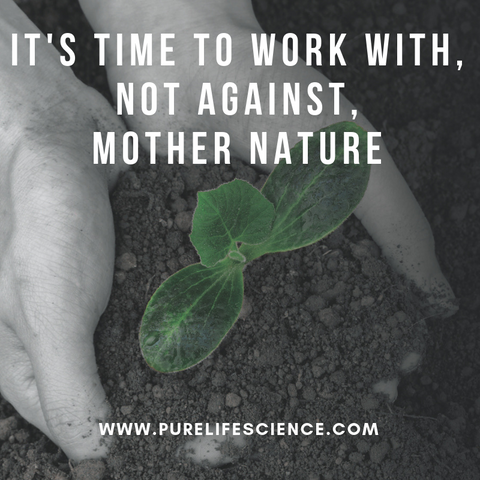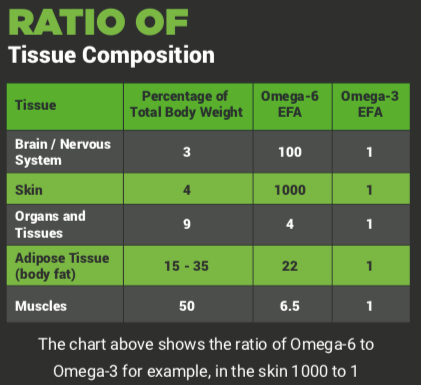It's Time to Work With, Not Against, Mother Nature

If you consider the entirety of human existence, it has been only recently that we have developed the ability to store, and then transport food to where it is needed. In the past we were dependent on the seasons and cycles of nature, and our bodies would adapt to those changes (much like a bear whose diet changes when high carbohydrate berries are available in the late summer and fall, thus allowing him to accumulate fat for use during the winter).
We now have access to the same food all year round; however, this convenience has ultimately lead to an increase in chronic disease, arthritis, diabetes, dementia, cancer, and chronic pain, and these effects are increasingly afflicting younger people. In fact, 88% of US citizens are now considered chronically ill (Araújo, Cai, & Stevens, 2018)! The system we have developed has upset the balance of nature, and as the commercial says, “You can’t fool Mother Nature!”
One of the ways mankind has been able to manipulate food to make it more available is through processing. Processing takes whole food, breaks it down, and reconfigures it in such a way as to make it palatable. But what is lost in this processing? How do we know that it has been put back together properly? If we are given the parts to a Swiss watch after it has been broken with a hammer, is it still a Swiss watch?
Now time for a little biochemistry 101. Consider the basic human cell. The human cell is surrounded by a membrane that has two layers of fat (fatty acids). These two types of fatty acids are called essential fatty acids (EFAs), and can only be extracted from what we eat. We cannot make EFAs, hence the designation “essential”. The composition of that membrane is on average 86% Omega-6 and 14% Omega-3 that are eighteen carbons long (it varies depending on type of tissue, but note that there is no Omega-3 in the skin or arteries, and very little in the brain).

Now, these fatty acids are very sensitive to processing. Look at the following website from the Canola Council of Canada. One of the things my grandmother told me (who lived relatively disease free, in a coal mining town and was overweight her entire life until the age of ninety-nine) is if you burn the oil in the pan (i.e. it smokes) then you must throw it out: it’s poison. She was right! Look at Corn Oil processing. Notice that the oils are heated repeatedly and hexane (a hydrocarbon that normally goes in your car!) is added, and then removed. After such abuse, the fatty acids can’t be in very good shape. Ninety-seven percent of all the oils we consume from a North American diet are made this way, and to make matters even worse, the left overs from the processing are pelleted and fed to our animals!
Ultimately, we have taken the two essential fatty acids everyone needs for healthy cells, destroyed them in processing, and then claimed it’s still food! We have also, as a by-product of the processing, made all of our farm animals (cows, chicken, pigs and even farmed fish) sick the same way–then we consume them! When the body has no choice it will use these adulterated Omega-6 and Omega-3 in the cell membrane, but at a huge cost to the function of that cell. Oxygen transfer across that cell membrane becomes impeded, which leads to lactic acid build-up (the burn you feel when you exercise).
Pure Form Omega® Natural helps correct this assault on our bodies by supplying the proper, vegan-sourced, organic, unadulterated Omega-6 and Omega-3 in the proper ratios. Lactic acid-build up is prevented, performance and stamina increases, and recovery time is significantly reduced.
REFERENCES
Araújo, J., Cai, J., & Stevens, J. (2018). “Prevalence of Optimal Metabolic Health in American Adults: National Health and Nutrition Examination Survey 2009–2016,” Metabolic Symptoms and Related Disorders, https://doi.org/10.1089/met.2018.0105
Corn Oil. (2006). Retrieved from https://corn.org/wp-content/uploads/2009/12/CornOil.pdf
Steps in Oil and Meal Processing. (2017). Retrieved from https://www.canolacouncil.org/oil-and-meal/what-is-canola/how-canola-is-processed/steps-in-oil-and-meal-processing
